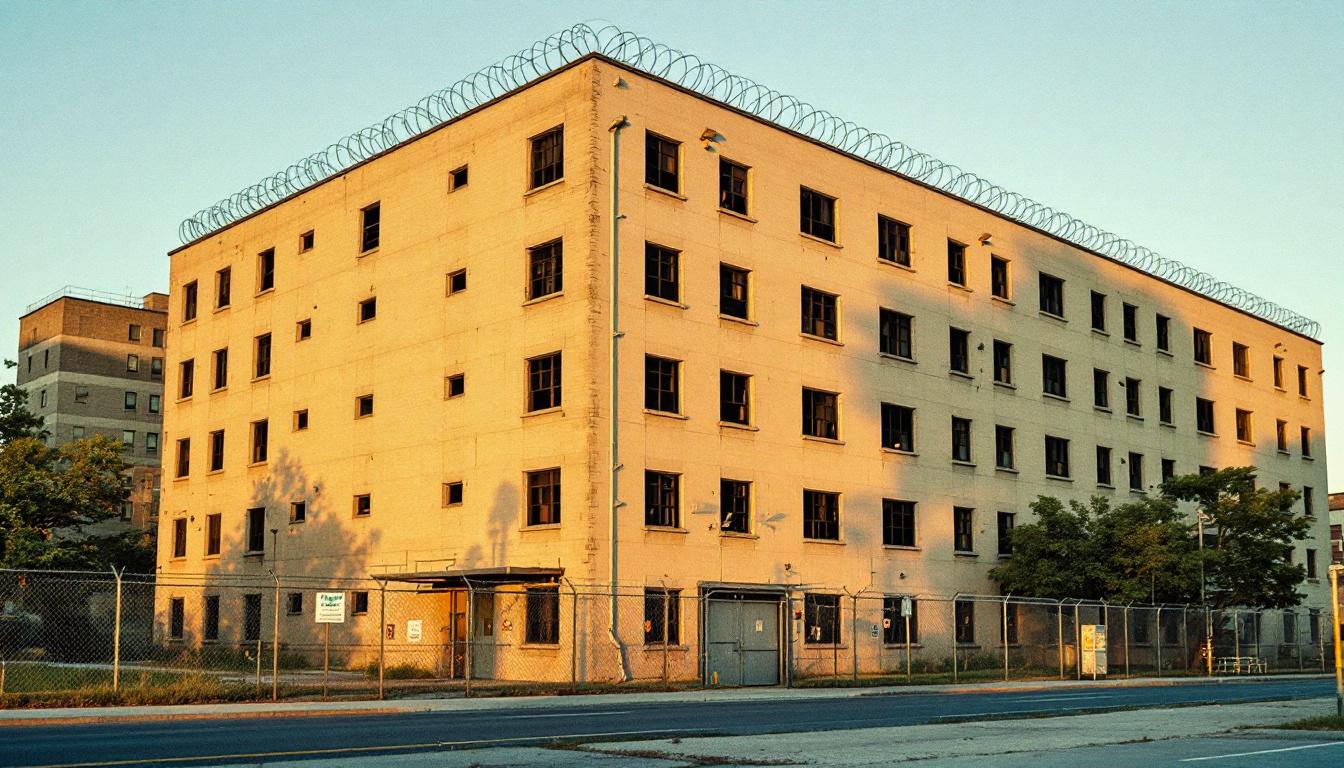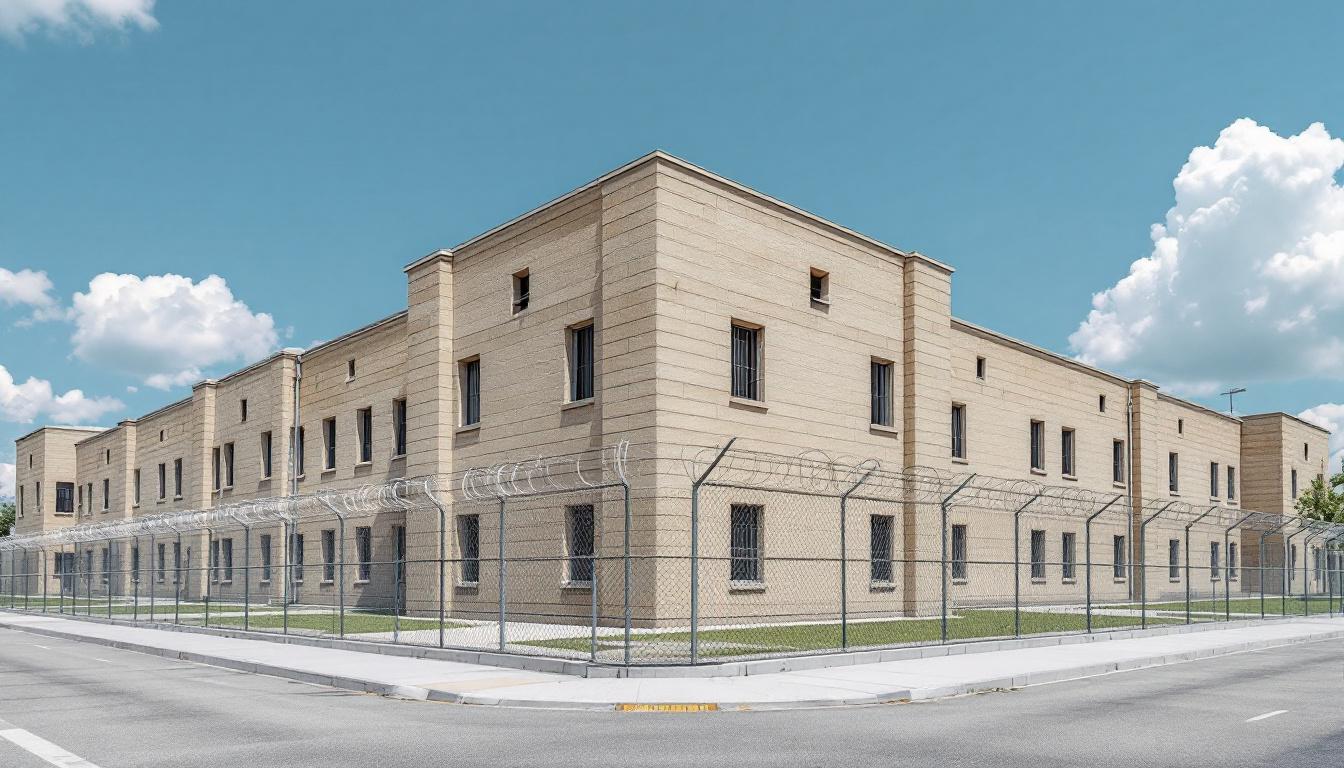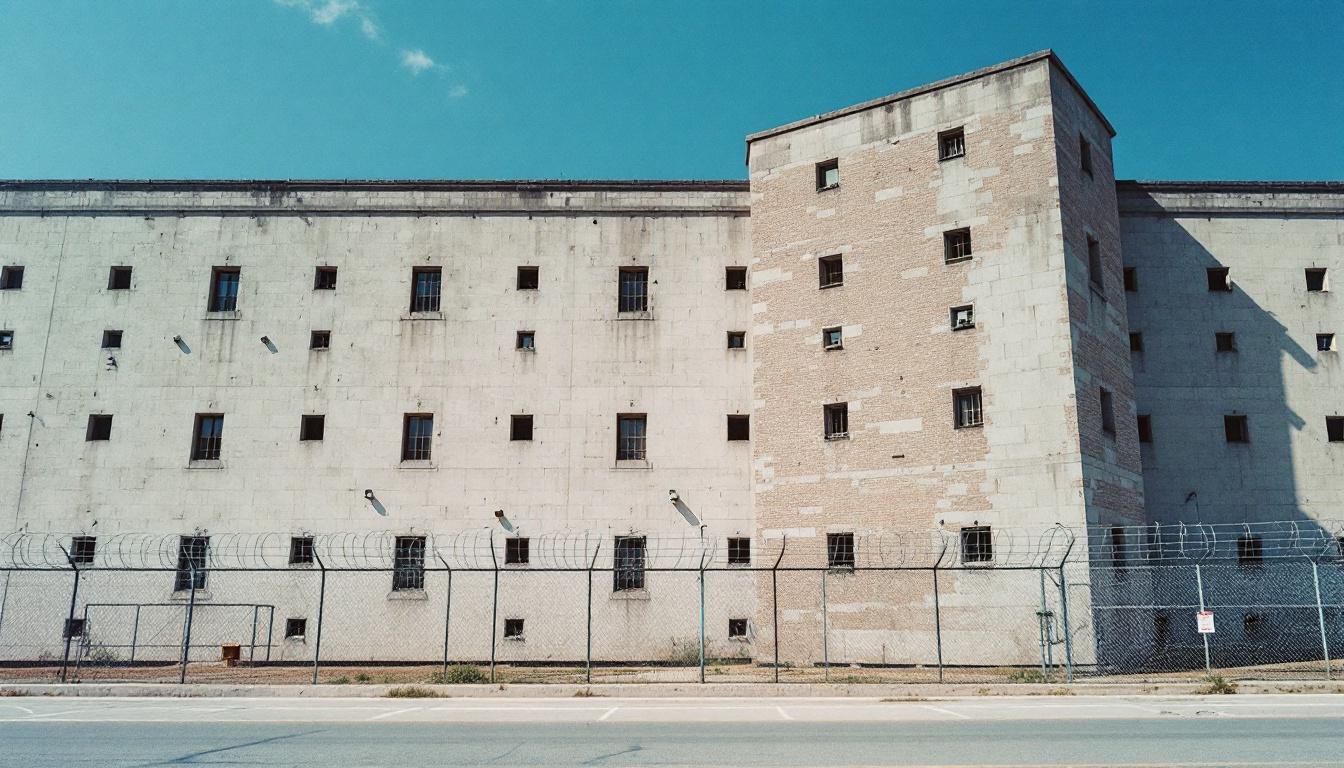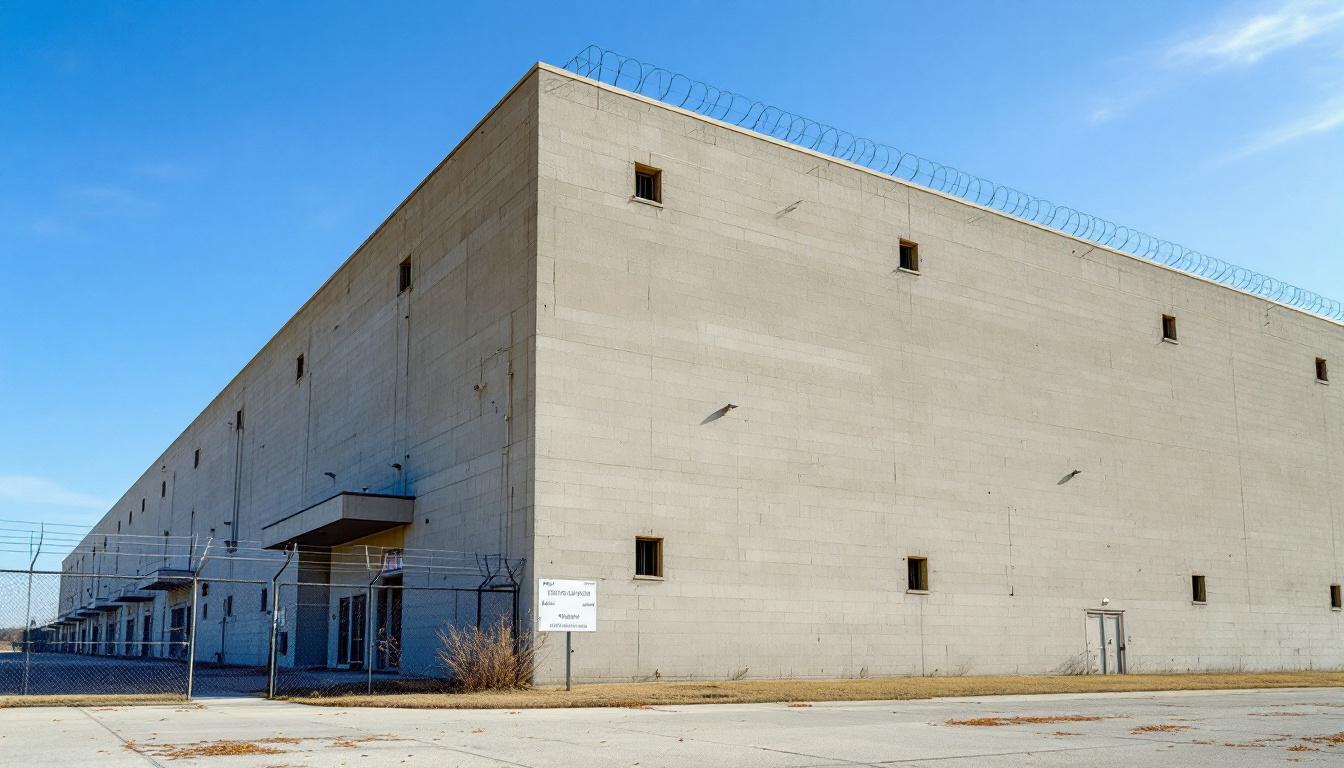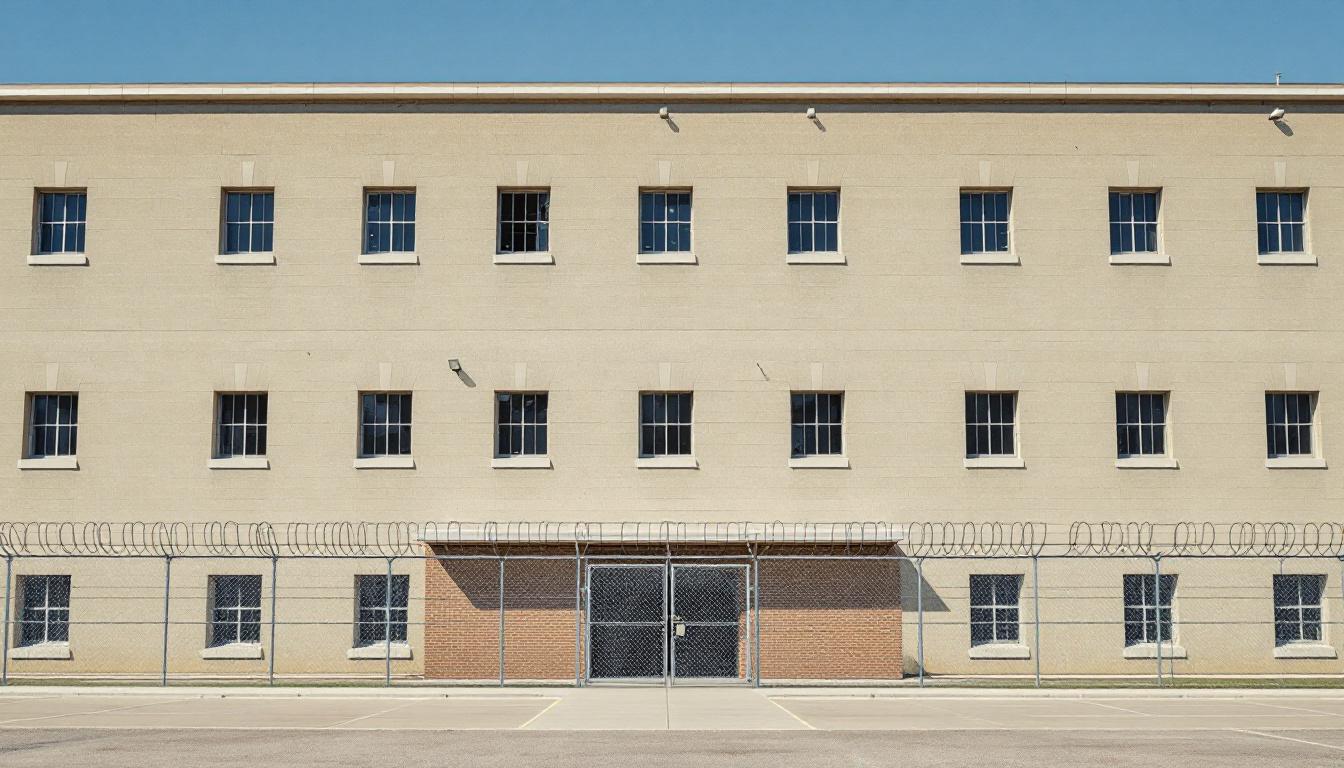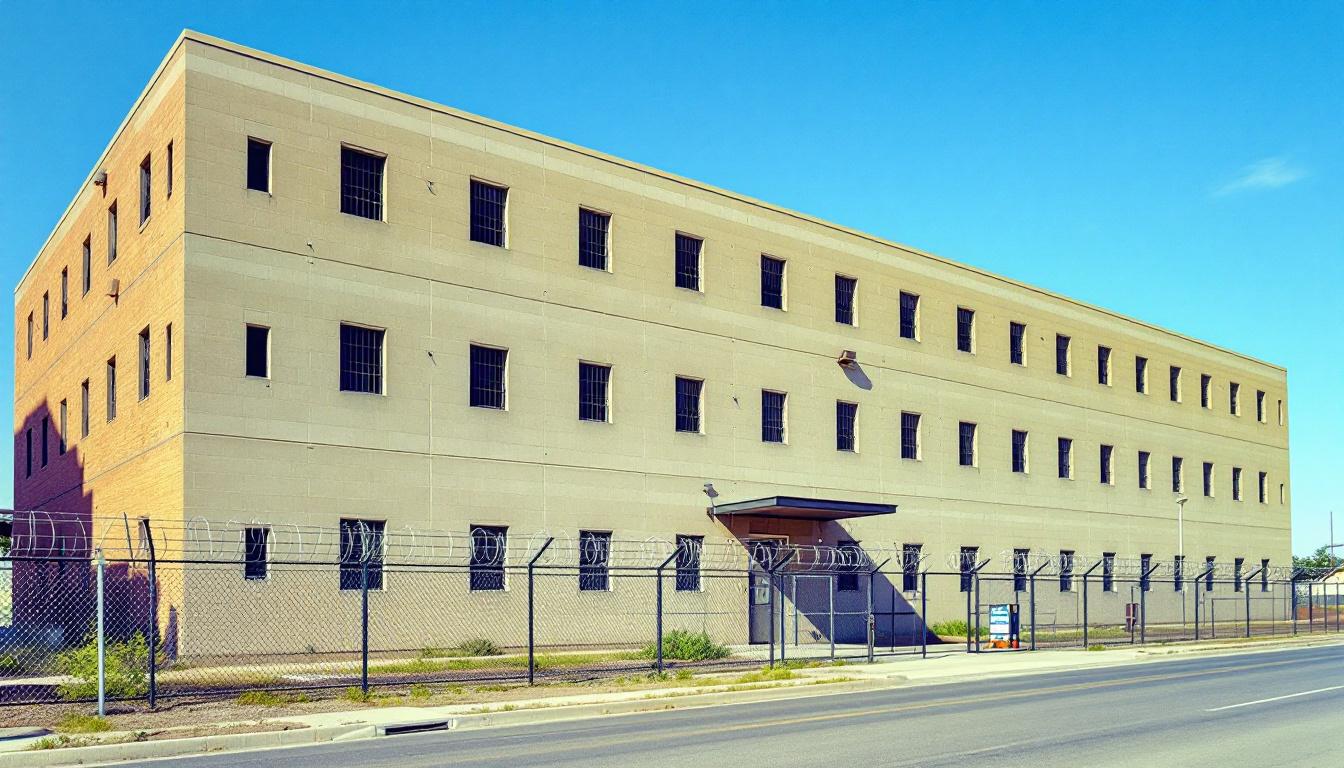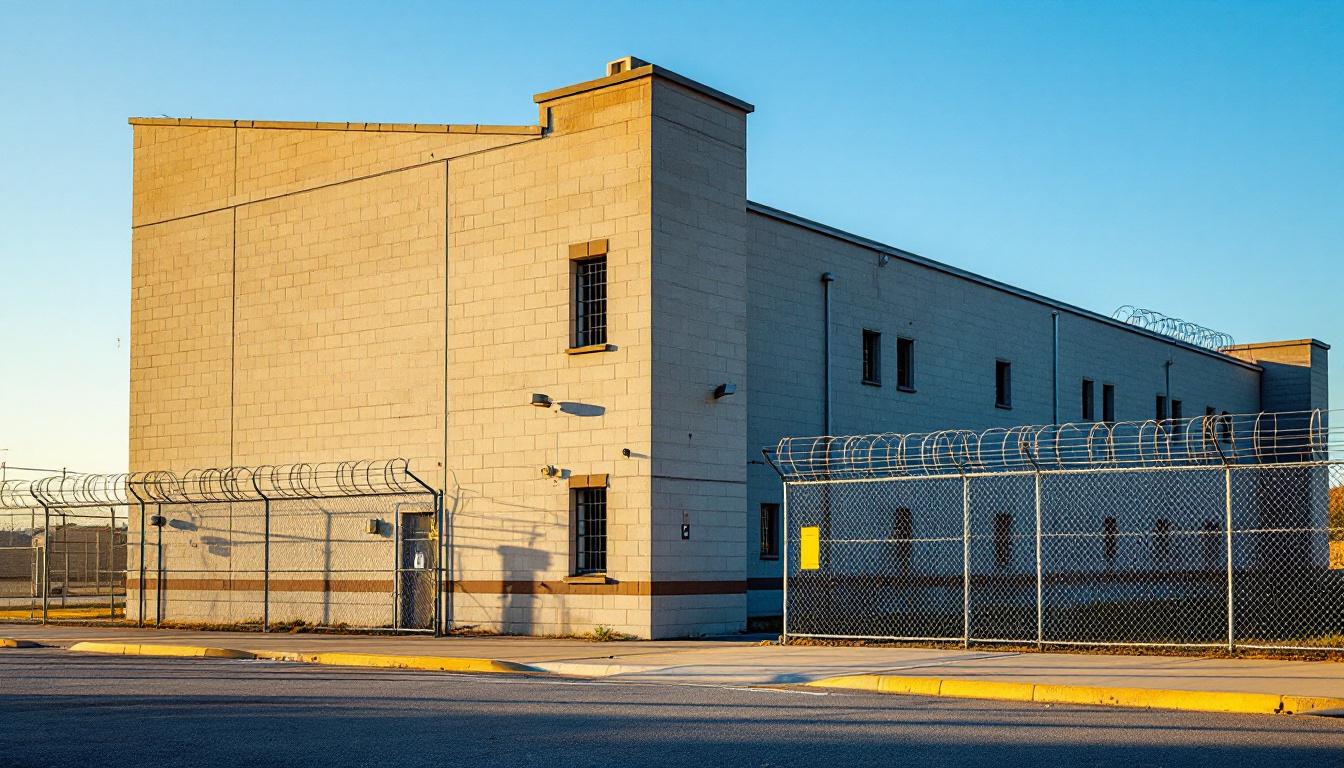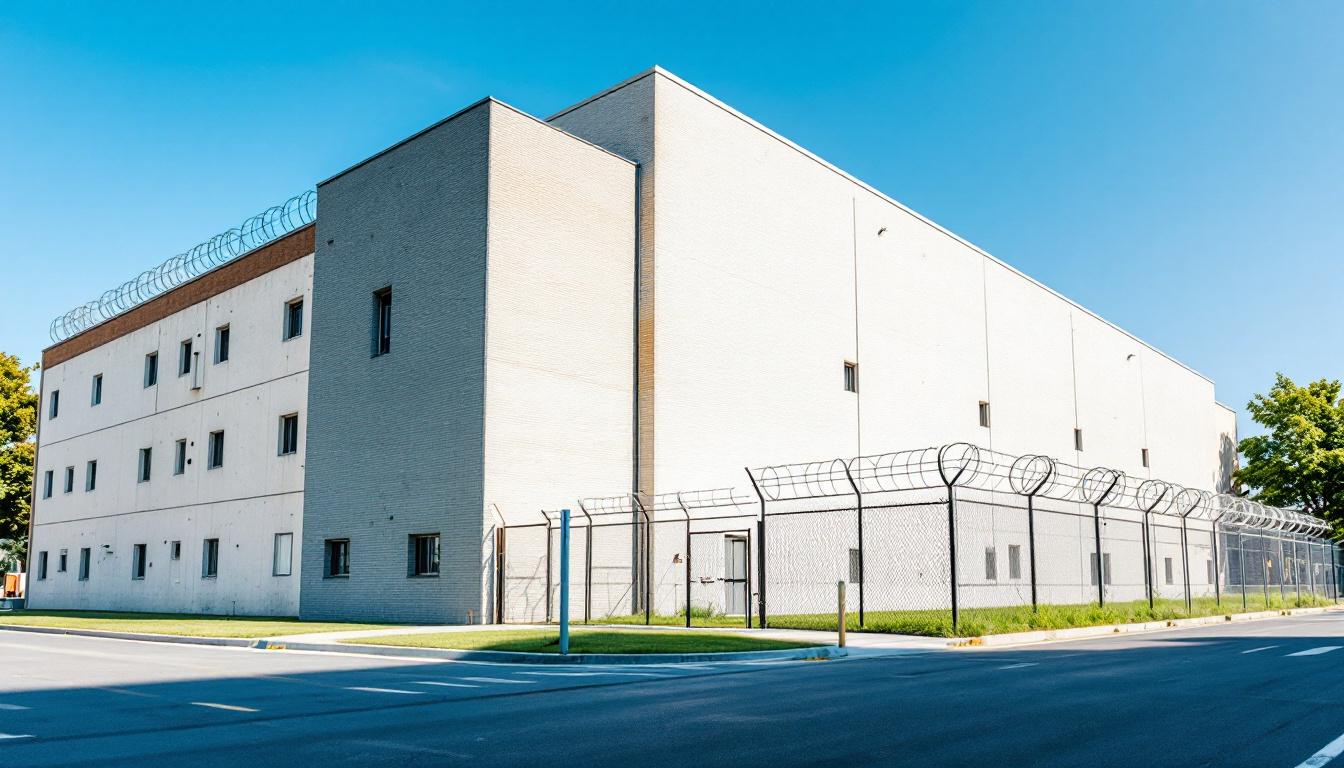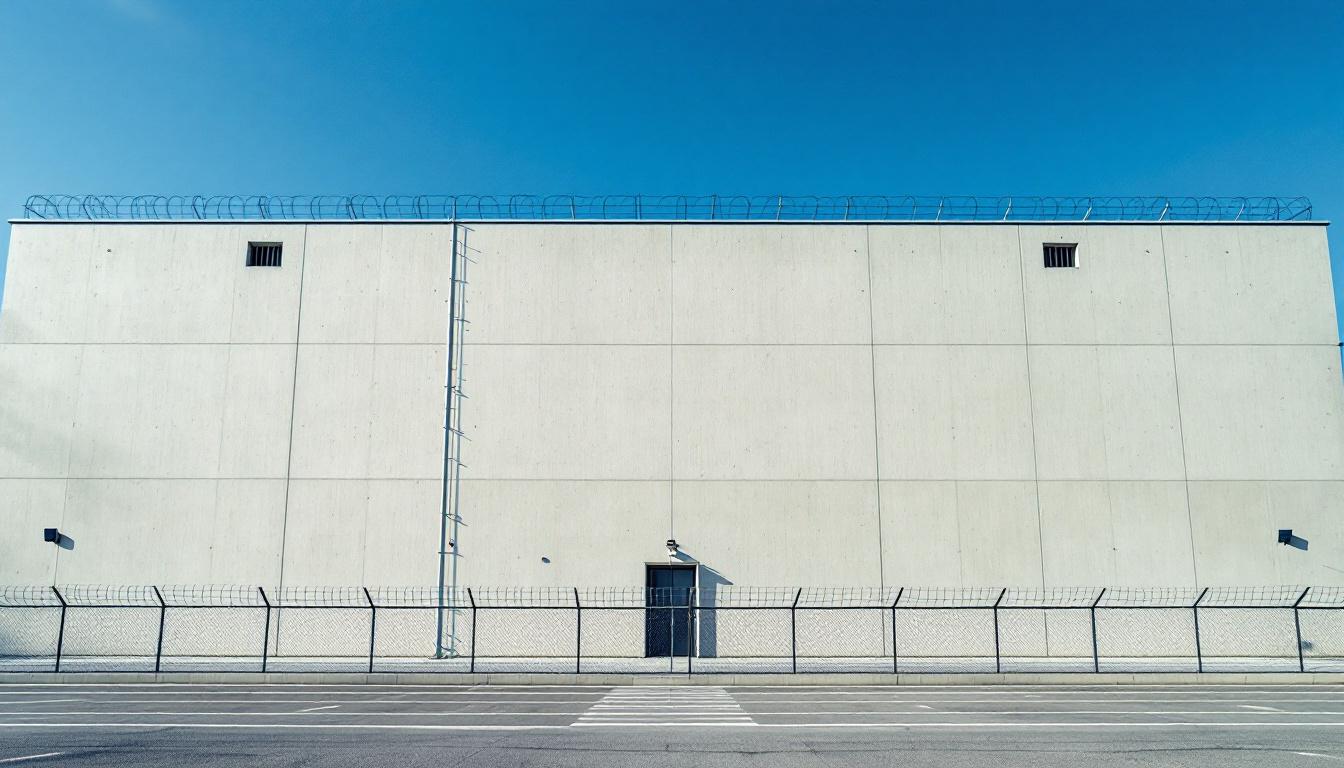
Quick Navigation
How to contact an inmate at Custer County Jail
This comprehensive guide will walk you through how to connect with an inmate at Custer County Jail. Follow the steps below to find an inmate and send letters and photos:
- Search for the inmate using our search tool below
- Create your account or log in to Penmate
- Write your message (up to 6,000 characters)
- Send instantly - inmates receive printed copies daily
Find an Inmate
Search for an inmate to start communicating today
Tip: You can search by first name, last name, or inmate ID number
To contact a person at Custer County Jail start by searching for the person on the official facility website. Perform a search by following these steps:
- Step 1: Enter their first name and last name into the search form and click "Search"
- Step 2: Locate their inmate record
- Step 3: Write down their Inmate ID and any housing information provided
Important! Be sure to enter the person's full name. Nicknames should not be used.
How to Send Messages to Inmates

You can use your phone or computer to send emails, letters, and photos to an inmate. Messages are sent electronically to inmate tablets or kiosks at the facility. If you would like to send a message, start by searching for an inmate at Custer County Jail.
Sending Photos and Postcards

A great way to send love and support to a loved one at Custer County Jail is to send photos and postcards. It only takes a few minutes to send photos from your phone and it makes a huge difference. You can also mail postcards with words of support and inspiration, or design your own postcard for special moments like birthdays and holidays.
Important! Be sure not to send any explicit photos or they may not be approved by the facility. You can also use a photo printing app like Penmate to make sure your photos are printed at the correct size (4x6 or 3x5) and are mailed according to the rules and regulations of Custer County Jail.
Frequently asked questions about Custer County Jail
-
How long does it take to deliver a message?
If you're sending an email message your letter is usually delivered within 24-48 hours. For messages sent via mail you should expect delivery within 3-7 days. All messages will need be approved by Custer County Jail.
-
How much does it cost to send a message to Custer County Jail?
You can send a message free using your phone or mail a message via USPS for the price of a $0.60 stamp and envelope. You can also purchase credits or e-stamps from services starting at $1.99.
-
What services can I use to contact an inmate at Custer County Jail?
Penmate
You can use Penmate to send letters and photos to an inmate from your phone. It's an easy way to stay in touch during your loved one's incarceration. Use the inmate locator to find an inmate's location and contact information, then you can send messages within a few minutes.
Securus messaging
Securus may be another option for communicating with an inmate at Custer County Jail. You can create a friends and family account and purchase credits to send messages. All messages will be reviewed and must be approved by the facility.
JPay
Some county jails and state prisons may support sending messages with JPay. You must register an account with the system, find your loved one, and purchase stamps to send messages. For some locations you can also attach photos.
Smart Jail Mail
You may also check if Smart Jail Mail is available at Custer County Jail. Smart Jail Mail is operated by Smart Communications and has contracted with some state and county jails. After purchasing credits, your messages and photos are sent to the facility, printed out, and then handed out to your loved one.
-
What is the mailing address of Custer County Jail?
Mailing address:
Custer County Jail
300 N 7th Ave
Arapaho, OK 73620
Phone: (580) 323-1616Business hours:
- Monday: Closed
- Tuesday: 8:00 AM – 5:00 PM
- Wednesday: 8:00 AM – 5:00 PM
- Thursday: 8:00 AM – 5:00 PM
- Friday: 8:00 AM – 5:00 PM
- Saturday: Closed
- Sunday: Closed
-
What are the visiting hours at Custer County Jail?
Visiting hours at Custer County Jail vary by housing unit and security level. Generally, visits are scheduled on weekends and holidays, with some facilities offering weekday visits. Contact the facility directly at (580) 323-1616 or check their website for the current visiting schedule. Visits typically last 30-60 minutes and must be scheduled in advance.
-
What items are prohibited when sending mail to Custer County Jail?
Prohibited items typically include: cash, personal checks, stamps, stickers, glitter, glue, tape, staples, paperclips, polaroid photos, musical or blank greeting cards, hardcover books, magazines with staples, and any items containing metal or electronics. Only send letters on plain white paper with blue or black ink. Photos must be printed on regular photo paper (no Polaroids). Always check with Custer County Jail for their specific mail policies.
-
How do I send money to an inmate at Custer County Jail?
You can send money to an inmate at Custer County Jail through several methods: 1) Online using JPay, Access Corrections, or the facility's approved vendor, 2) Money orders mailed directly to the facility with the inmate's name and ID number, 3) Kiosks located in the facility lobby, or 4) Over the phone using a credit or debit card. Fees vary by method, typically ranging from $2.95 to $11.95 per transaction.
-
Can I schedule a video visit with an inmate at Custer County Jail?
Many facilities now offer video visitation as an alternative to in-person visits. At Custer County Jail, video visits may be available through services like Penmate, Securus Video Connect, GTL, or ICSolutions. Video visits typically cost $10-20 for 20-30 minutes and must be scheduled in advance. You'll need a computer or smartphone with a camera and reliable internet connection. Contact the facility for their specific video visitation policies and approved vendors.
-
What identification do I need to visit an inmate at Custer County Jail?
All visitors must present valid government-issued photo identification such as a driver's license, state ID, passport, or military ID. Minors must be accompanied by a parent or legal guardian who can provide the minor's birth certificate. Some facilities require visitors to be on the inmate's approved visitation list, which may require a background check. Contact Custer County Jail for specific ID requirements and visitor approval procedures.
-
How can I find out an inmate's release date?
To find an inmate's release date at Custer County Jail, you can: 1) Use the online inmate search tool if available, 2) Call the facility's records department, 3) Contact the inmate's case manager or counselor, or 4) Have the inmate provide this information during a call or visit. For privacy reasons, some facilities only release this information to immediate family members.
Facility Overview
Official Website

About Custer County Jail
Community reintegration and individual development form the cornerstone of services provided at the Custer County Detention Center, OK, where comprehensive programming typically addresses the diverse needs of those within Oklahoma's correctional system. Located in Arapaho, this detention facility generally offers educational opportunities, substance abuse counseling, and vocational training designed to support successful transitions back into the community. The center's approach often emphasizes preparing individuals for their eventual return to society through structured programming that may include life skills development, mental health services, and work programs that help maintain connections to productive activities.
Within Oklahoma's broader correctional framework, the facility serves as an important component of the state's detention infrastructure, typically housing individuals awaiting trial or serving shorter sentences. The center generally maintains family visitation programs and communication services that help preserve vital community ties during incarceration periods. Located in western Oklahoma's rural landscape, the Arapaho facility often reflects the region's commitment to balancing public safety with rehabilitation-focused approaches that recognize the importance of maintaining individuals' connections to their home communities.
The detention center's operations typically align with state standards for correctional facilities, often incorporating modern approaches to custody management and inmate services. Programming may include religious services, library access, and recreational activities designed to support positive behavior and personal growth. As part of the south region's correctional network, the facility generally coordinates with local courts, law enforcement agencies, and community organizations to ensure effective case processing and support services that benefit both the individuals served and the broader Custer County community.
Programs & Services
The multifaceted approach to personal development within Custer County Detention Center encompasses a broad spectrum of opportunities designed to address the diverse needs of individuals during their incarceration. This comprehensive framework typically recognizes that meaningful rehabilitation requires addressing educational deficits, developing practical skills, and fostering emotional growth through various therapeutic interventions. The facility's programming philosophy often emphasizes the interconnected nature of personal transformation, where academic achievement, vocational competency, and psychological well-being work synergistically to prepare individuals for successful community reintegration.
Educational opportunities may include foundational literacy programs alongside more advanced academic coursework, allowing individuals to pursue their educational goals regardless of their starting point. Furthermore, vocational training components often provide hands-on experience in practical trades, with plumbing instruction representing one avenue through which participants can develop marketable skills. These educational and vocational elements typically operate under a structured framework that encourages progressive skill development while accommodating varying learning styles and time constraints inherent in the correctional environment.
The facility's therapeutic and support services often encompass anger management programming, which addresses behavioral patterns that may have contributed to criminal involvement. Furthermore, faith-based programs typically provide spiritual guidance and community support for those seeking this form of personal development. Stress management opportunities may offer individuals practical coping strategies and emotional regulation techniques essential for both institutional adjustment and post-release success. These support services often work in conjunction with the educational and vocational components to create a holistic approach to personal growth and rehabilitation.
Daily Life & Visitation
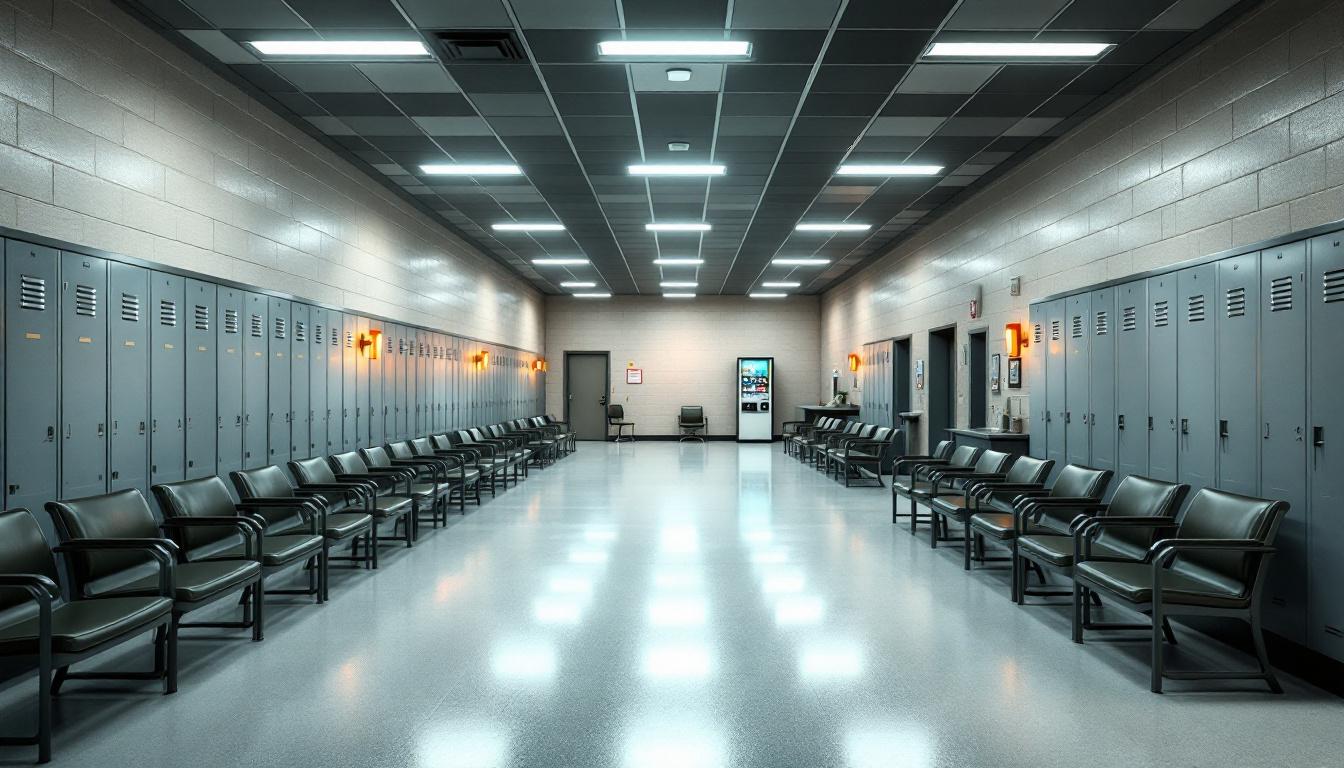
The sound of breakfast preparation typically signals the beginning of another structured day for individuals housed within the facility, as kitchen staff work to prepare meals that will fuel the routines ahead. At present, the Custer County Detention Center actively maintains a schedule that balances security requirements with opportunities for personal development and rehabilitation. Daily routines generally begin in the early morning hours with headcounts and meal service, followed by various programming activities, work assignments, and recreational periods that offer structure throughout the day.
Living accommodations typically consist of housing units designed to provide secure yet functional spaces for individuals during their stay. The facility generally houses individuals in dormitory-style settings or individual cells, depending on classification levels and available space, with each area equipped with basic amenities including sleeping quarters, restroom facilities, and common areas where appropriate. Furthermore, individuals may typically access personal property within established guidelines, while commissary services often provide opportunities to purchase additional items such as snacks, hygiene products, and writing materials to supplement their daily needs.
Although security procedures necessarily govern movement and activities throughout the facility, various programs typically offer meaningful ways for individuals to spend their time constructively. Work assignments may include kitchen duties, facility maintenance, or laundry services, providing both structure and potential skill development opportunities. Recreation periods often include access to outdoor areas when weather permits, along with indoor activities such as television viewing, reading materials, and games. Furthermore, the facility generally maintains visitation policies that allow family members and approved visitors to maintain connections through scheduled visits, while telephone access and mail services typically provide additional communication options to help individuals stay connected with their support systems during their time at the detention center.
Ready to Connect?
Start communicating with your loved one today
Search for an Inmate
